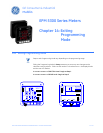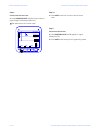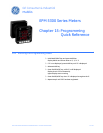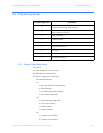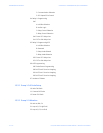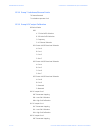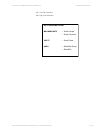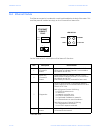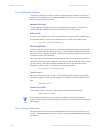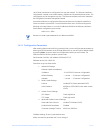
CHAPTER 16: ETHERNET OPTION ETHERNET OPTION SETUP
EPM 5300 SERIES ADVANCED POWER METERS – INSTRUCTION MANUAL 16–119
16.2 Ethernet Option Setup
This chapter covers the required steps to get the Ethernet Interface on-line and working.
There is only one method used to log into the Ethernet Server and set up the IP address:
• Network Port Login: make a Telnet connection to the network port (9999).
It is important to consider the following points before logging into and configuring the
Ethernet Interface:
• The Ethernet Interface’s IP address must be configured before a network
connection is available.
• Only one person at a time may be logged into the network port. This eliminates
the possibility of several people trying to configure the Ethernet Interface
simultaneously.
16.2.1 Default IP Address
The Ethernet Interface ships with a default IP address set to 0.0.0.0, whish automatically
enables DHCP within the Ethernet Interface.
Provided a DHCP server exists on the network, it will supply the Ethernet Interface with an
IP address, gateway address and subnet mask when the Ethernet Interface boots up. If
not DHCP server exists, the Ethernet Interface will respond with a diagnostic error: the RED
Diagnostic LED blinks continuously and the GREEN Status LED blinks five times.
16.2.2 AutoIP
Auto IP allows an Ethernet Interface to obtain an address in a network that does not have
a DHCP server. (Windows 98 and 2000 also support AutoIP.)
AutoIP assigns a random valid address to the Ethernet Interface in the range of 169.254.x.1
to 169.254.x.1 (x can be between 0 and 255). This range of IP addresses is not to be used
over the Internet. If the Ethernet Interface has not been configured manually and cannot
find a DHCP server, it automatically chooses an address from the reserved range. The
Ethernet Interface then uses the Address Resolution Protocol (ARP) to send out a request
asking if any node is using that address. If another node is using the same address, the
Ethernet Interface assigns another IP address, reboots and repeats the sequence.
Note
AutoIP-enabled Ethernet Interfaces are constantly looking for DHCP servers. If a DHCP
server becomes available on the network, the AutoIP-enabled Ethernet Interface switches
to the DHCP server-provided address and the unit reboots. If the DHCP server exists but
denies the Ethernet Interface an IP address, the Ethernet Interface does not attach to the
network, but waits and retries.
AutoIP allows a small network of AutoIP-enabled devices to be set up without any need for
a DHCP server or static IP addresses.
AutoIP can be disabled be setting the IP address to 0.0.1.0. The 1 in the third octet is the
disabling factor.



